Holiday plants that are toxic to dogs
holly
Holly is known for its prickly, waxy green leaves. Can be used for holiday wreaths, garlands, arrangements, etc.
Ingestion of holly leaves and berries by dogs can cause gastrointestinal upset and lethargy. If your dog ingests large amounts of holly, it may have difficulty walking.
Signs of holly poisoning in dogs are often mild and resolve on their own, but if your dog continues to vomit, feels extremely tired and has difficulty sitting or standing, or has difficulty walking after eating holly. If this occurs, please contact your emergency veterinarian or contact your emergency veterinarian. Pet poisoning helpline® Contact us at 855-764-7661 for next steps.
mistletoe
Mistletoe is a leafy plant used alone or arranged with other flowers and plants for holiday decorations. There are two main types of mistletoe: American and European.

Fortunately, if your dog has eaten a small amount of any part of the American mistletoe plant (one or two leaves or a few berries), American mistletoe is not much of a concern. Dogs may experience symptoms such as vomiting, diarrhea, and loss of appetite.
However, consuming large amounts of American mistletoe or any amount of European mistletoe can cause abnormal heart rate and high blood pressure.
When this happens, your dog may appear weak and lethargic or not change at all, which can delay treatment or cause damage to the heart and organs. Your dog may not have any obvious signs, so contact your veterinarian as soon as possible.
Your veterinarian can make sure your dog’s heart rate and blood pressure are normal and prescribe medication to resolve any gastrointestinal complaints if necessary.
christmas tree
There are many different types of Christmas trees: spruce, pine, fir, and artificial. All of these types of trees can irritate your dog’s gastrointestinal tract and cause tummy problems such as vomiting, diarrhea, and loss of appetite.
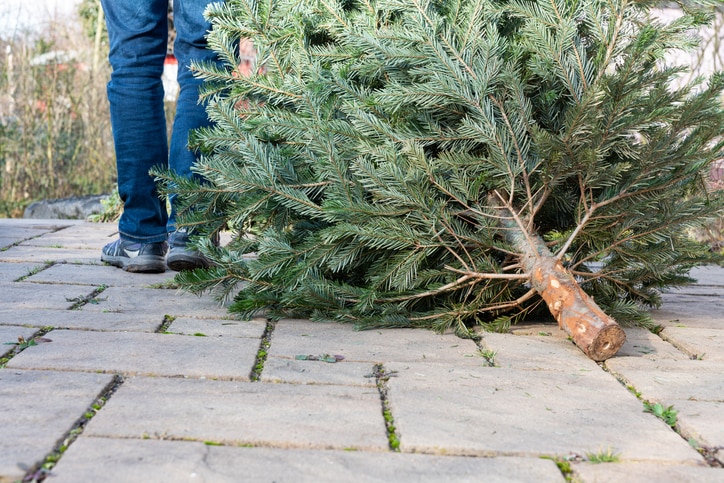
In some cases, if your puppy swallows Christmas tree needles or chews on a live tree stick, it can cause an intestinal blockage in dogs.
These signs are often mild and resolve on their own, but if any signs are obvious you may need to see a veterinarian for examination and treatment. If in doubt, consult your veterinarian for guidance.
amaryllis
Amaryllis is a flower consisting of a long stem and multiple green leaves that sprout from a bulb. These light bulbs are often purchased for home decoration or as gifts during the holiday season.
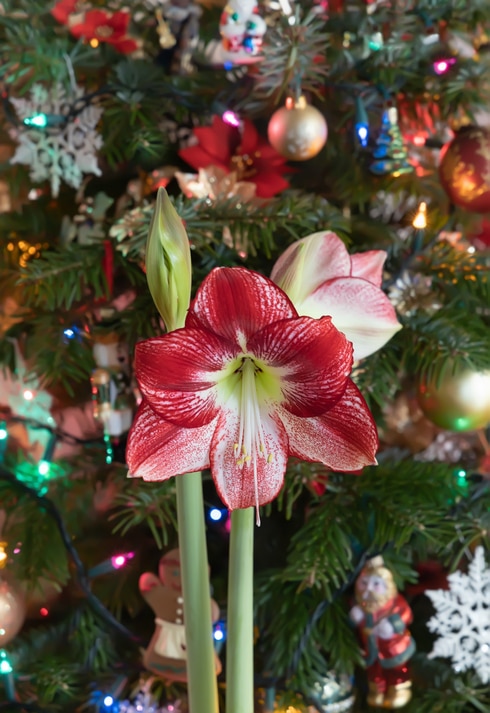
Dogs may eat the petals, leaves, and even the bulb itself.
Depending on which parts of the plant your dog ingests and how much, it can cause gastrointestinal problems such as vomiting and diarrhea that may contain blood, abnormal heart rate and high blood pressure, tremors, and seizures.
If your dog has eaten amaryllis, contact your emergency veterinarian or Pet Poison Helpline to determine next steps.
Many plants have similar names, so try to identify the plant if possible. This will help you decide on your next steps by consulting the Pet Poison Helpline or your veterinarian.
snowdrop
Snowdrops have white flowers and are considered to bloom in early spring. In some parts of the United States, it sometimes blooms outdoors in early December, but during the holidays it is more often found indoors in pots or bouquets.
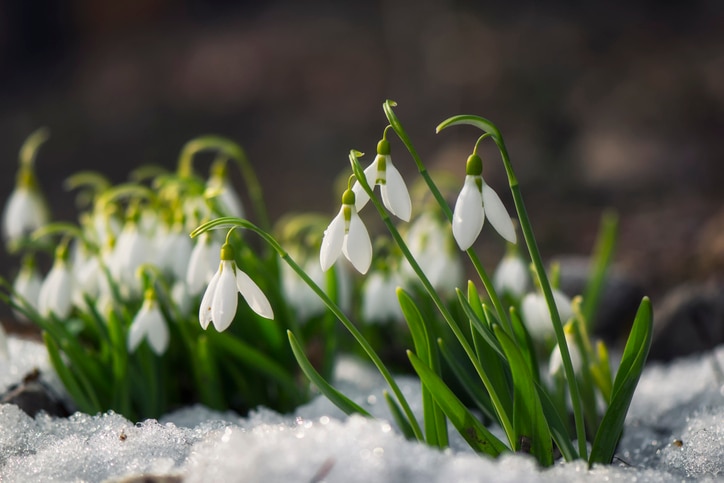
Flowers, stems, and leaves are small and easy for dogs to chew or swallow. If you plant it in a pot, you may want to dig up the bulb and chew on it.
Unfortunately, if your dog eats some snowdrops, it can cause gastrointestinal upset, heart rate and blood pressure abnormalities, and even seizures. If your dog ingests any part of the snowdrop plant, contact your veterinarian or Pet Poison Helpline to determine next steps.
poinsettia
Potted poinsettias can be found everywhere during the holiday season.
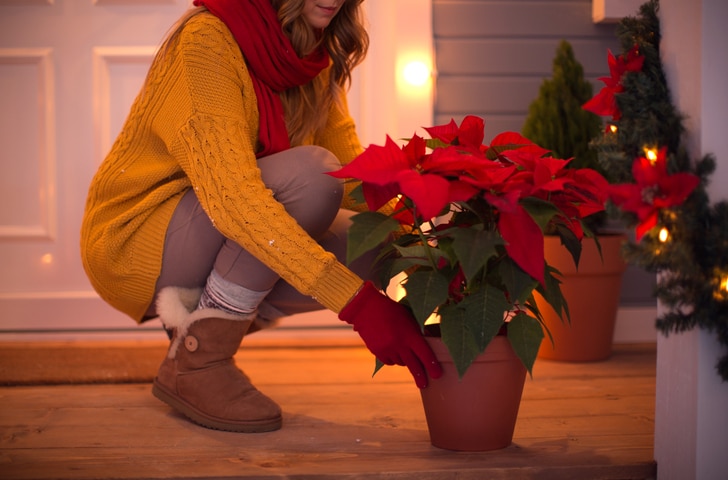
Since floors are a common location for these plants, leaves and flowers are easily accessible to dogs and can be chewed or ingested. If something like this happens, May develop drooling, vomiting, and diarrhea.
Gastrointestinal complaints in dogs are usually mild and resolve on their own, but if your dog experiences vomiting or diarrhea for more than a few episodes, it’s best to see a veterinarian.
Yew
Yew is an evergreen tree that is usually planted outdoors or in pots, but is also used in wreaths, wreaths, and flower arrangements during the holidays.
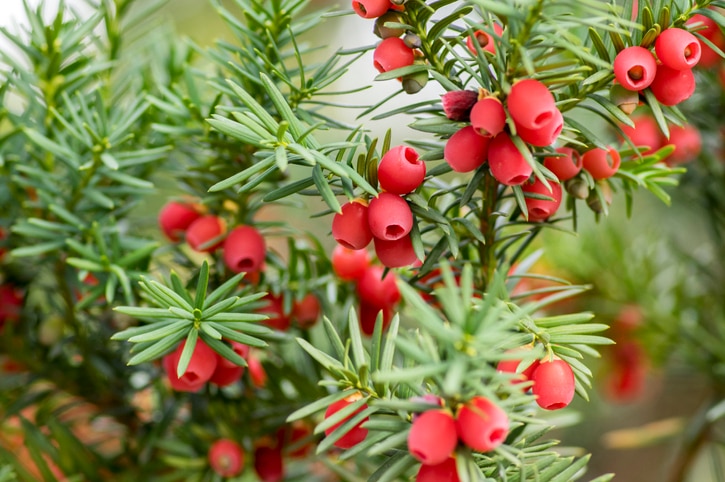
Yews may contain fruit in addition to waxy needles. If your dog ingests any part of the yew other than the red flesh, it can cause gastrointestinal problems. Also, eating more than a taste or bite can cause abnormal heart rate, high blood pressure, tremors, and seizures, especially if you chew on the branches.
If your dog has eaten a yew plant, contact your veterinarian or Pet Poison Helpline immediately for next steps, as there may be signs of serious poisoning.
What to do if your dog ingests a poisonous holiday plant
Holidays can be filled with busy schedules, travel, guests, and other activities that change the daily lives of pet parents and their dogs. In situations like this, even the most cautious household could find that their dog has ingested a potentially poisonous holiday plant.
If you ingest a poisonous plant:
Contact the Pet Poison Helpline at 855-764-7661. Connect with a trained veterinary toxicology expert who can help you determine whether you should be concerned about your dog’s plant exposure and, if so, what you should do next. Masu.
Many plants have similar names, so try to identify the plant if possible (either by the purchase receipt, the pot label, or an image search). This will help you decide on your next steps by consulting the Pet Poison Helpline or your veterinarian.
If your dog shows signs of difficulty breathing, difficulty standing or walking, seizures, or decreased alertness, seek immediate veterinary attention.




